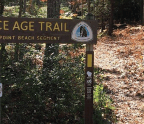Decoding Duchamp

o other artist is as closely linked to conceptual art as Marcel Duchamp, who toyed with viewers’ expectations, creating works that puzzled, a porcelain urinal he boldly submitted for display at a New York City exhibition in 1917. He also loved to fool with identity, famously creating his own alter ego, Rose Sélavy, as a play on the sounds of e (“The passion of love, that’s life”). Details encoded in Duchamp’s go beyond changing the bottle from orange to green. The label shows Duchamp dressing fashionably, as Belle Greene might. The title——is a play on the French dessert, a chocolate-dipped pear. is close to “” meaning “veilwater,” a possible reference to Greene’s adopted middle name, Da Costa. A more intricate reference appears in a 1921 letter from Duchamp to artist Francis Picabia that includes a pun about “bitterness shrinking the Negro.” Paleontologist and Duchamp decoder Stephen Jay Gould linked “shrinking” to Greene axing the “r” from Greener and the bitterness of blanching her blackness. All of this is conjectural. Another element to the puzzle is that is also the first time Duchamp identified Rose Sélavy as “Rrose,” a hint that the added “r” might refer to the letter Belle Greener discarded to become Belle Greene.
You’re reading a preview, subscribe to read more.
Start your free 30 days





